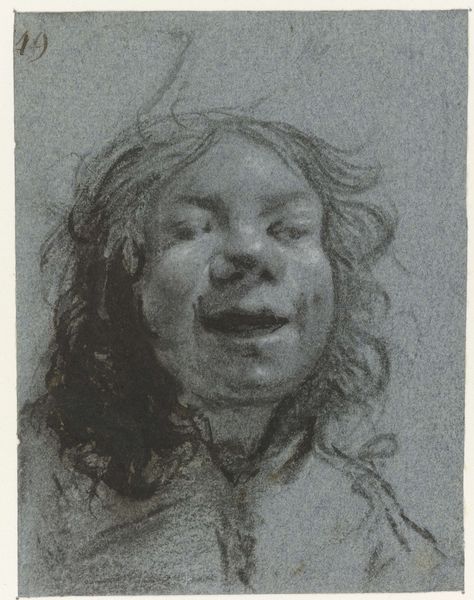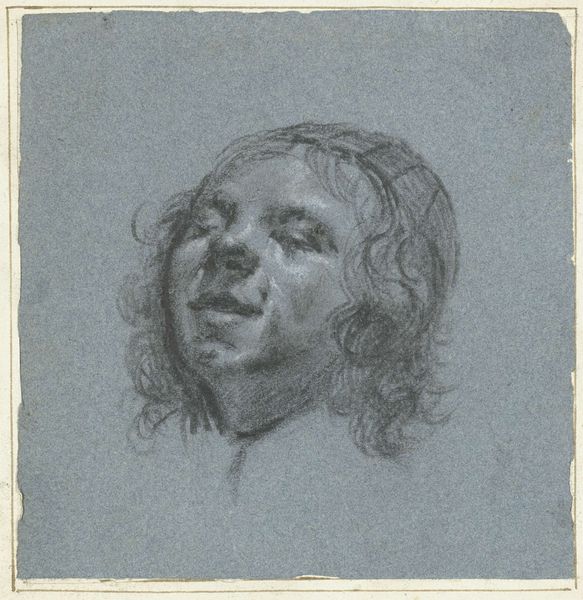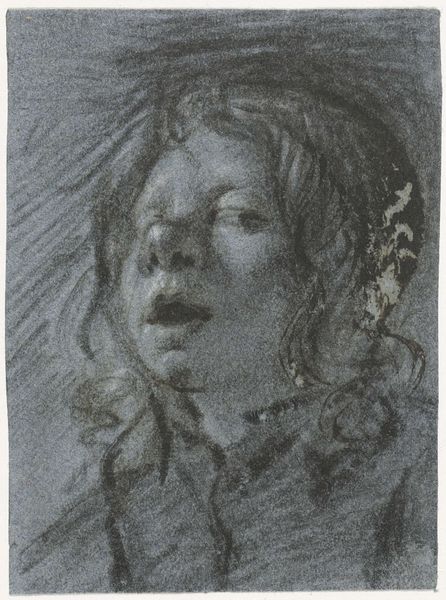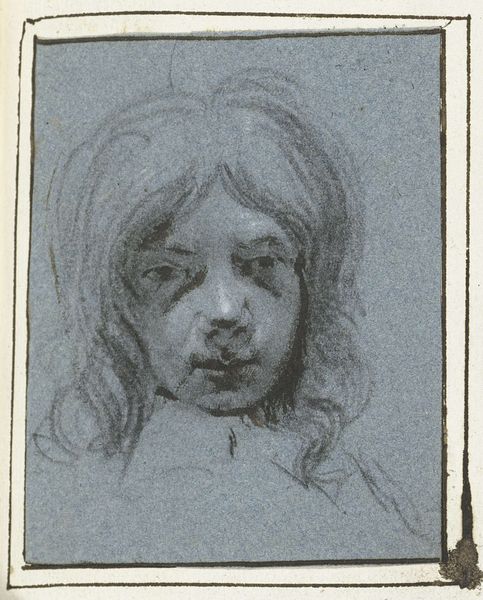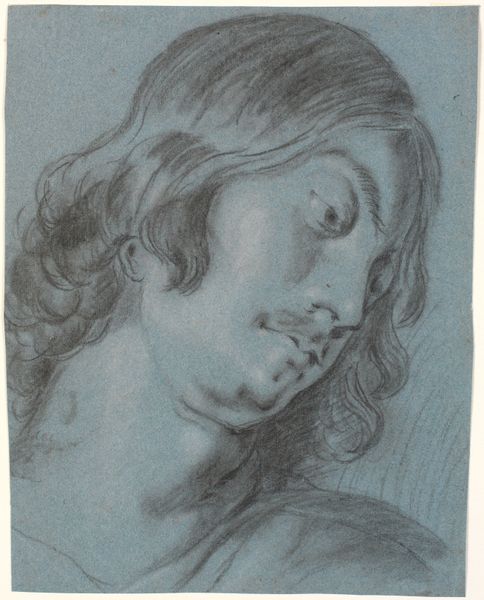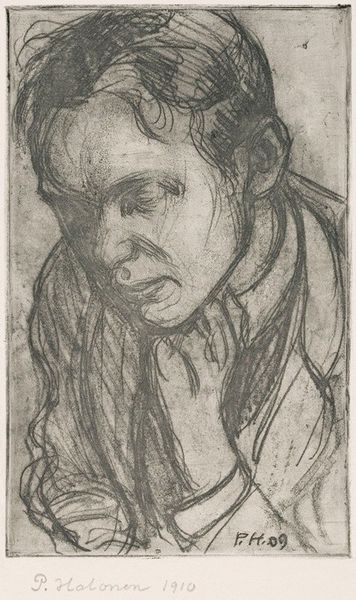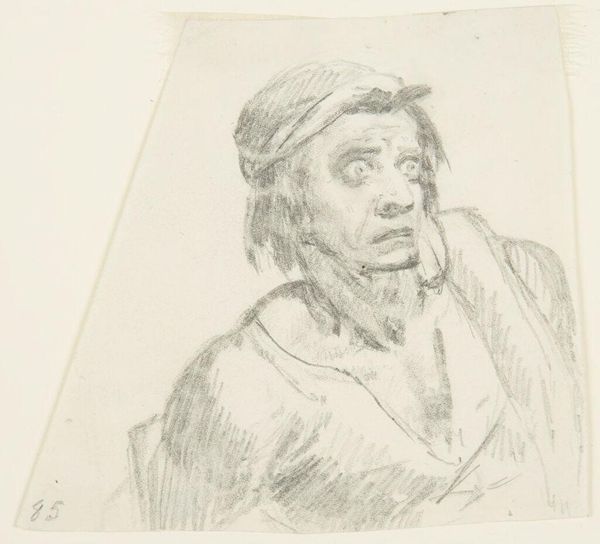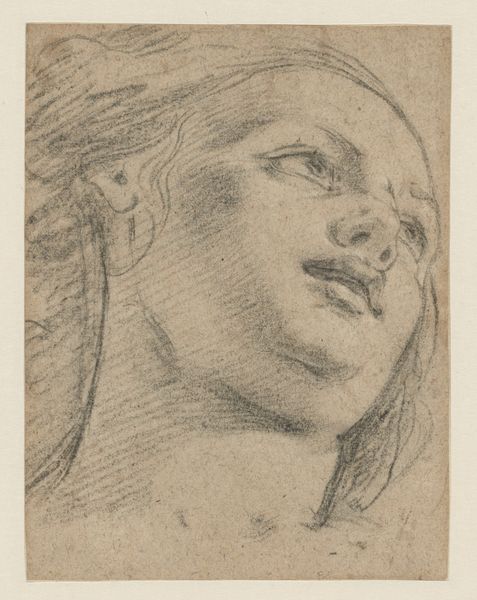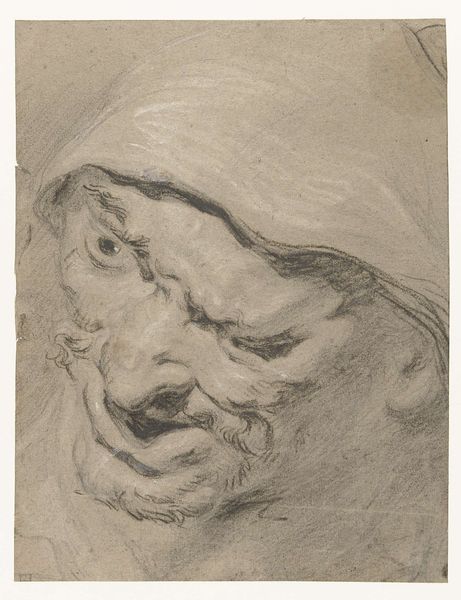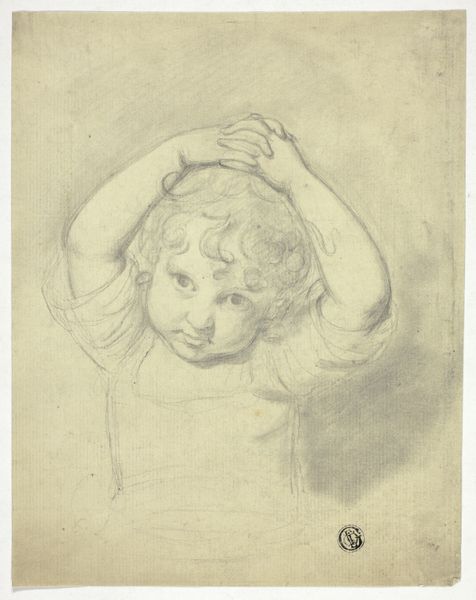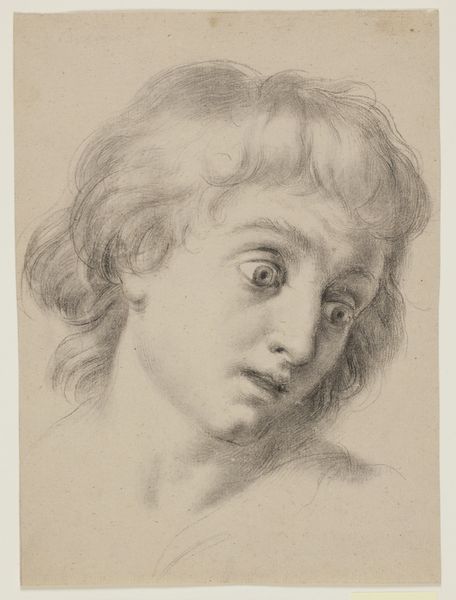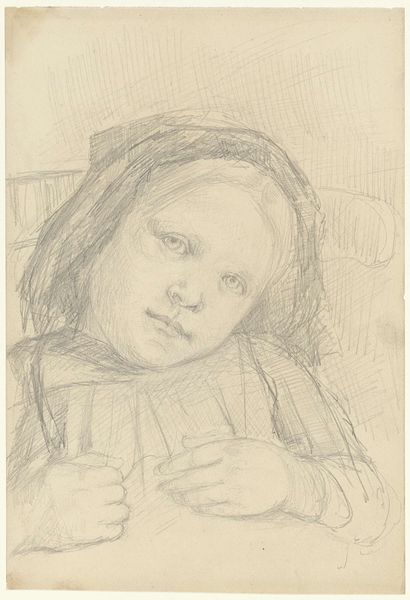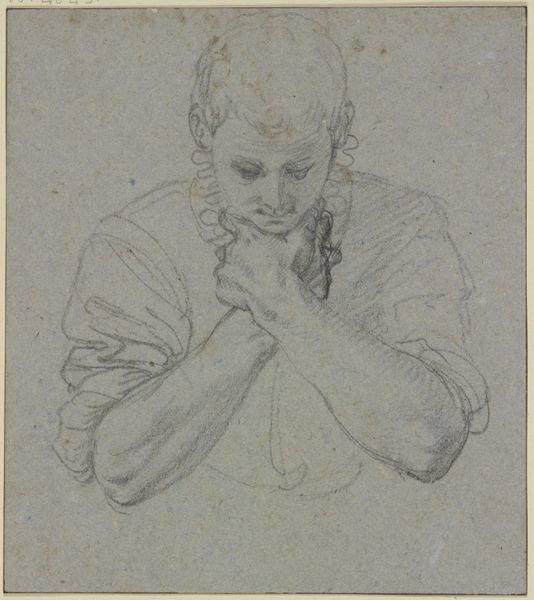
drawing, charcoal
#
portrait
#
drawing
#
self-portrait
#
baroque
#
charcoal drawing
#
figuration
#
portrait drawing
#
charcoal
#
northern-renaissance
Dimensions: height 105 mm, width 105 mm
Copyright: Rijks Museum: Open Domain
Editor: This is "Self-Portrait with a Frown" by Moses ter Borch, created around 1660. It’s a charcoal drawing currently held at the Rijksmuseum. The starkness of the charcoal and the furrowed brow create an intense mood. What compositional elements stand out to you? Curator: The dynamism within the restricted tonal range compels the viewer. Notice the artist’s sophisticated modulation of the charcoal. From the almost ethereal lightness of the background to the concentrated dark accents defining the facial contours. Consider the tension created by the limited palette, enhancing the focal point, the facial expression itself. How do the lines and shading work together? Editor: I see how the hatching technique, with short, deliberate strokes, really defines the depth of the wrinkles and the overall texture of the skin. The contrast makes the frown even more pronounced. Curator: Precisely. The artist exploits the properties inherent to charcoal. See how the varied pressure evokes a range of tonal effects, lending dimensionality. There is masterful exploitation of value, consider how this informs your reading of the work. Does this application impact your emotional interpretation? Editor: Absolutely. The contrast emphasizes the gravity of the expression, lending a real emotional depth and intensity to the self-portrait. The tight crop magnifies this tension. Curator: The framing underscores formal decisions. Its very austerity reinforces the psychological intensity, distilling the artistic pursuit into one of pure form and expression, irrespective of social narrative. Editor: Seeing it through a formalist lens, stripping away context, reveals the artist’s mastery of charcoal. I notice that this is achieved not just through precision but also through harnessing the inherent tonal properties. Curator: Yes, we return to material qualities informing a reading that transcends its literal depiction. This underscores the transformative potential of the medium, revealing artistic process itself as central to this study.
Comments
No comments
Be the first to comment and join the conversation on the ultimate creative platform.
